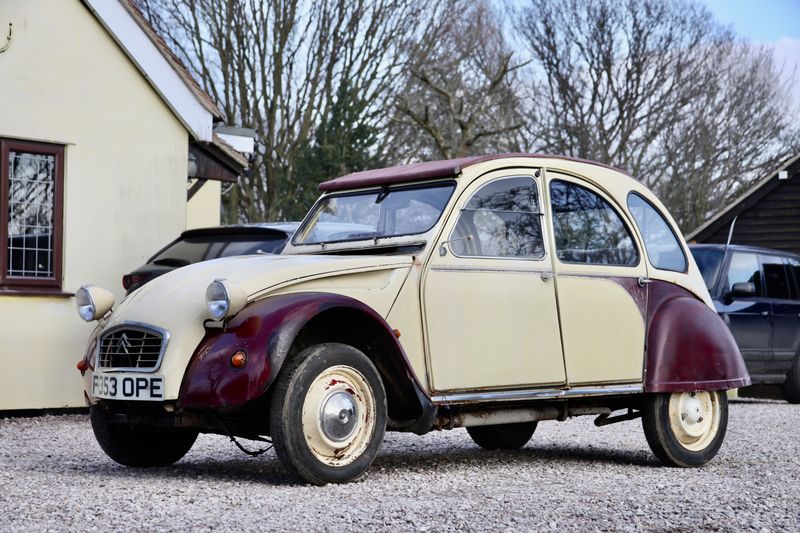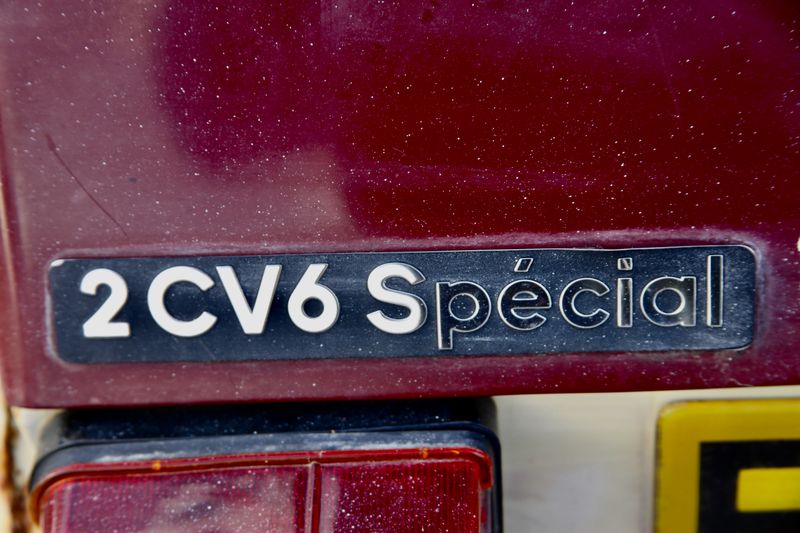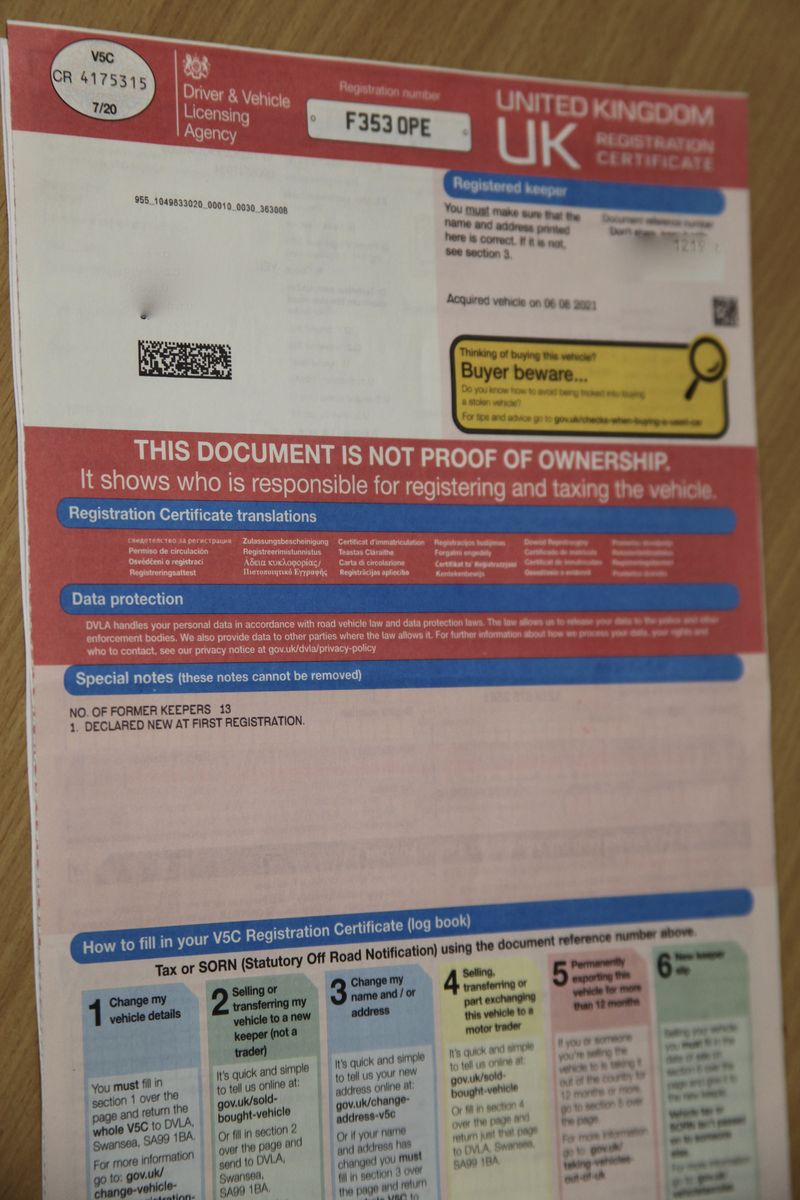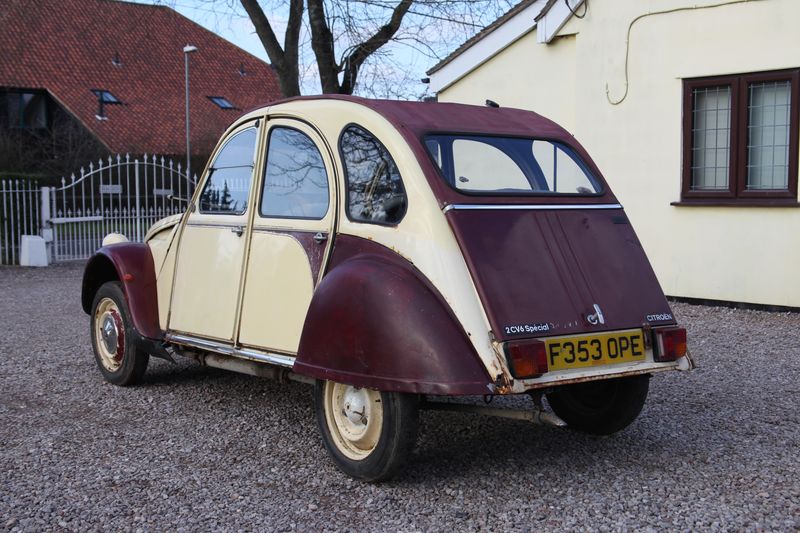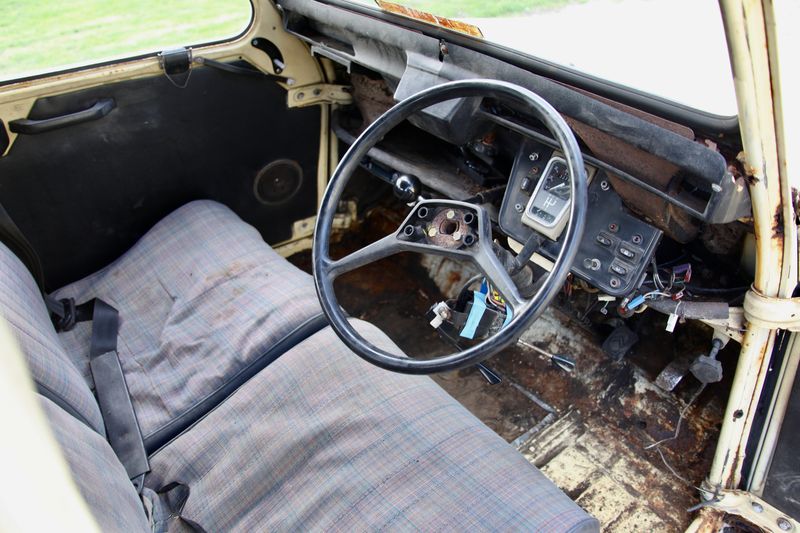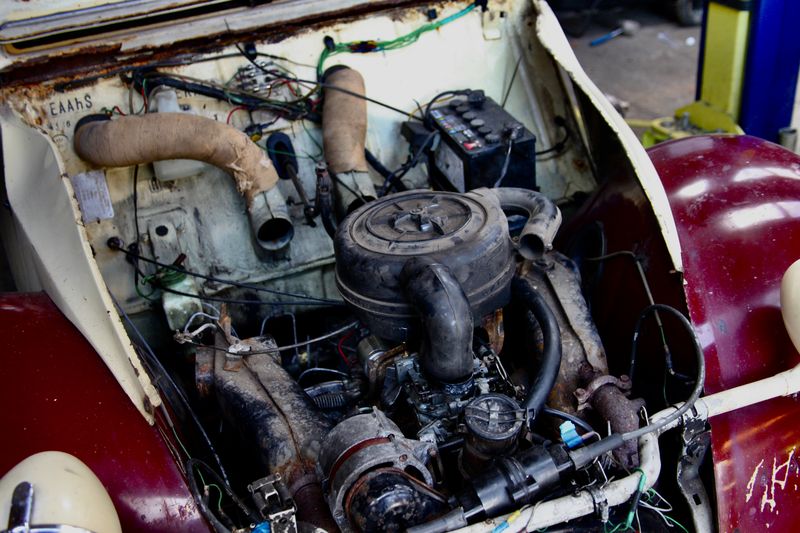Highlights
- Late 2CV6 in need of full body restoration
- Replacement canvas roof in good condition
- Starts and drives
- Mostly complete and a great project basis
THE BACKGROUND
The 2CV, Deux Chevaux, ‘Tin Snail’ or ‘Umbrella on wheels (Pluriel)’ was born in the 1930s, the brainchild of Citroën’s then boss Pierre-Jules Boulanger.
According to folklore, he was driving in the countryside, stuck behind a farmer’s horse and cart. To his mind, a faster alternative would not only speed up traffic but would also be good for the economy, so the 2CV was born – a mechanically simple vehicle with seating that was equally suitable for people and agricultural produce, casks of wine or even small livestock. Famously, he wanted the car to be able to cross a ploughed field without breaking a tray of eggs carried in the back.
The 2CV was born in 1936, with the first models coming off the production line in 1938 ahead of the 1939 Paris Motor Show. Then war broke out, and it would be 1948 before 2CV marketing began in anger.
Little did anyone know at the time, but it would still be on sale 40 years later, when this example rolled off the production line. It had evolved a bit since its launch, but the basic car was still very much the same – and that long and rich production run means that you can still get everything you need for a 2CV today.
That’s great news if you’re looking for a project, as the simple bolt-together construction of a 2CV makes them popular restoration fodder. The downside being that so many have been done already and projects are getting fewer and further between.
Here, then, is your very own 2CV blank canvas – but it does require a fair bit of work.
THE HISTORY
This is a genuine UK RHD car that was first registered in November 1988. It has had 13 owners since, the most recent since 2004.
The odometer reading of 32,792 miles is partly backed up by MOT history but should not be assumed as genuine.
It was last MOT’d in 2009 and has been off the road since just 290 miles after it passed that last test, and was bought as part of a barn clearance by the vendor having been parked up for at least 12 years.
Since acquiring it, the vendor has got the car running and it is sold as mechanically functional but in need of thorough restoration.
THE PAPERWORK
Supplied with the Citroën are a Haynes Workshop Manual and a printed MOT history, along with a receipt for a new starter motor that the vendor acquired to get it running.
There is a current V5C in the name of the vendor.
THE EXTERIOR
Make no mistake – this is not a quick tidy-up project. The car has rust issues that will need to be addressed properly before it sees the road again, but there are a good many plus points, not least of which is the 2CV’s modular construction.
It’s like a Land Rover – it starts from the chassis and everything else bolts on, including the body and the engine and transmission. As such, repairing a 2CV is less of a challenge than carrying out complex body repairs to unitary construction cars, which makes them hugely popular with restorers.
Other good points are that the chassis really isn’t that bad, or what we could see of it at least, and that it’s complete. The only missing body parts are the door mirrors and bumpers, both easily replaced.
The panels are all there and are definitely salvageable and the canvas roof is actually pretty good – it was replaced in the mid-2000s and is certainly viable for future use.
The floor pans have rusted through on the passenger side and the worst patch of corrosion is on the corner of the bulkhead. A new bulkhead is the sensible and most cost-effective way out.
So yes, there’s a fair bit of work to do. But do it right and you’ll have a gorgeous 2CV in the best ‘Plums and Custard’ colour scheme.
THE INTERIOR
Inside, the seats are certainly worth cleaning up and reusing, as are the interior door cards. There are no carpets, though, and the upper dashboard is cracked, while the steering wheel centre boss is missing.
But, it’s a 2CV. And that means you can get pretty much everything you need, including those parts, off the shelf.
THE MECHANICS
When the vendor first acquired the 2CV it was a non-runner, but with the acquisition of a new starter motor and a clean-up of the fuel system, it now starts and runs. It sounds pretty good for a 2CV, too. Noisy, but only because they always were!
The vendor has driven it around his paddock and reports that the gears and clutch work and that it has brakes, which will obviously be of benefit for loading and transporting it.
THE APPEAL
This is a project car – of that, make no mistake. But with 2CV projects becoming increasingly rare, and especially original UK cars, this one has a lot of appeal.
It’s mostly complete and original, it runs and it has a V5C, so there’ll be no nasty surprises when applying to register it once the restoration is complete.
If you’re looking for a blank canvas and are an experienced car restorer, or are looking for your first restoration project and want to begin with a car that is well-supported by parts suppliers and bolts together far more easily than a Mini (for example) the this would be a great place to start. It deserves to live again.
Notice to bidders
Although every care is taken to ensure this listing is as factual and transparent as possible, all details within the listing are subject to the information provided to us by the seller. Car & Classic does not take responsibility for any information missing from the listing. Please ensure you are satisfied with the vehicle description and all information provided before placing a bid.
All bids are legally binding once placed. Any winning bidder who withdraws from a sale, is subject to our bidders fee charge. Please see our FAQs and T&C's for further information. Viewings of vehicles are encouraged, but entirely at the seller’s discretion.

